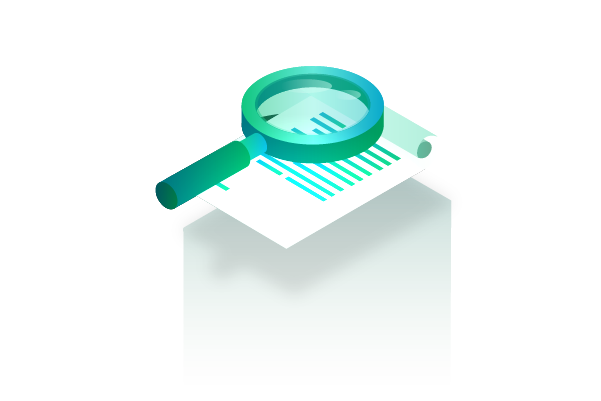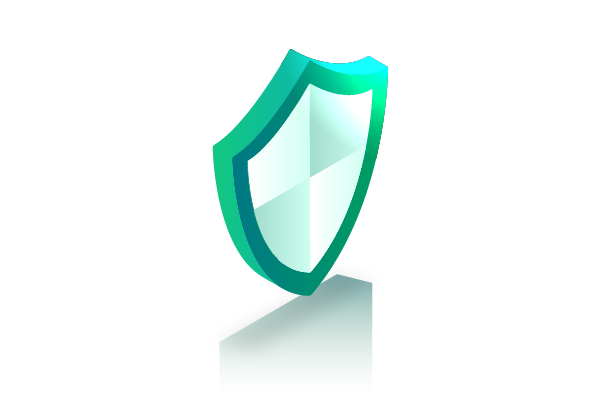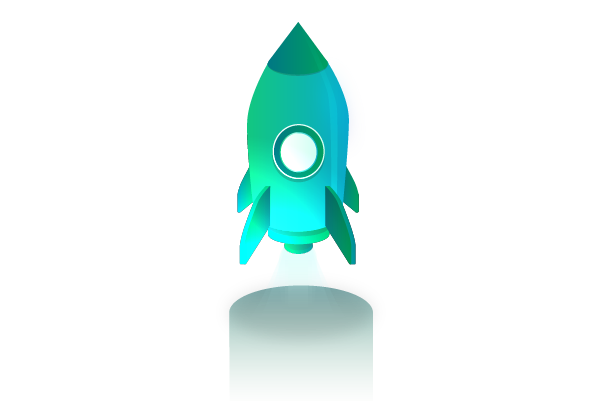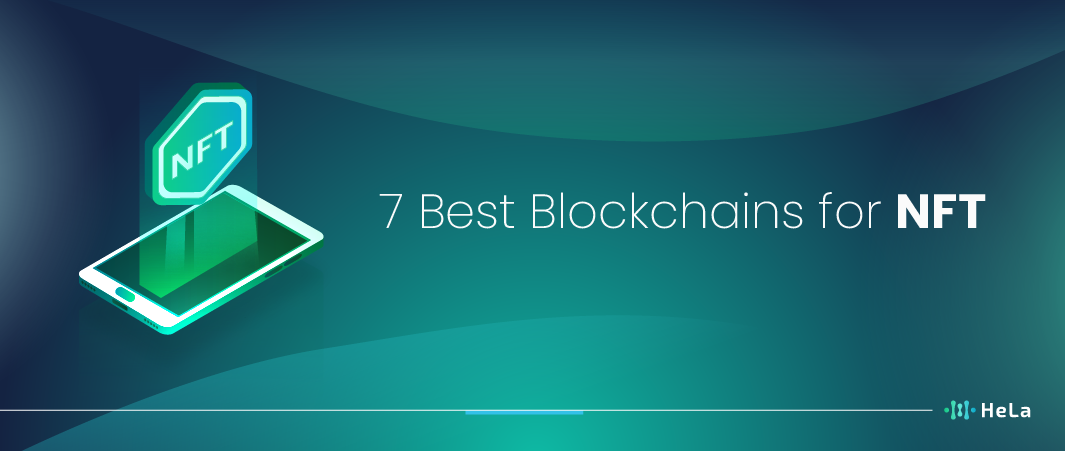The digital world is rapidly evolving, and at the heart of this transformation is the burgeoning field of Non-Fungible Tokens (NFTs). As unique digital assets, NFTs have revolutionized how we perceive ownership and authenticity in the digital sphere. The foundation of these digital assets lies in the underlying technology – blockchain. In 2026, choosing the right blockchain for your NFT endeavors is more crucial than ever. It impacts everything from transaction fees to community engagement.
Understanding the nuances of different blockchains can be daunting. Yet, it’s essential for creators, collectors, and traders in the NFT marketplace. This article simplifies this task by listing the 7 best blockchains for NFTs in 2026. We consider factors like security, scalability, cost, and community support. Whether you’re a seasoned artist or a curious investor, knowing these platforms will help you navigate the NFT landscape with confidence.
The Rise of NFTs and Blockchain Technology
The rise of Non-Fungible Tokens (NFTs) represents a significant shift in the digital world, redefining concepts of ownership, value, and authenticity. NFTs are unique digital assets verified and secured by blockchain technology, which ensures their scarcity and provenance. They have become popular in various sectors, including art, gaming, and collectibles, allowing creators to monetize digital works directly.
The evolution of NFTs is rooted in the broader development of blockchain technology, which offers a decentralized and transparent system for transactions. Unlike cryptocurrencies such as Bitcoin, which are fungible and can be exchanged on a one-to-one basis, NFTs are one-of-a-kind. This uniqueness has given rise to a new digital economy where digital art and virtual goods are bought and sold like physical assets, with some fetching millions of dollars.
The impact of NFTs is widespread. For artists and creators, they provide a new avenue for monetizing digital creations by selling them as unique, collectible items. Buyers, on the other hand, gain ownership of digital items that can have significant emotional and monetary value. Furthermore, NFTs are being explored for use in identity verification, supply chain management, and more, due to their ability to provide proof of authenticity and ownership.
Also Read: How to Mint NFT: Step-by-Step for Beginners
Looking forward, the potential of NFTs is enormous. They could revolutionize various industries by enabling new forms of ownership and investment. For instance, real estate or physical art could be tokenized into NFTs, allowing for fractional ownership and investment. However, challenges remain, including environmental concerns due to the energy consumption of blockchain networks, regulatory issues, and the need for wider understanding and acceptance of digital ownership concepts.
In summary, NFTs, backed by the security and decentralization of blockchain technology, have opened new frontiers in digital ownership and creativity. As the technology matures and overcomes its challenges, it could further integrate into our digital and physical lives, changing how we own, invest in, and appreciate assets.
7 Best Blockchains for NFT to consider in 2026

As of 2026, the world of Non-Fungible Tokens (NFTs) has continued to evolve, and several blockchain platforms have risen to prominence for hosting NFTs and supporting the burgeoning digital art, gaming, and collectibles ecosystems. Here are 7 of the best blockchains for NFTs in 2026, each with its unique strengths and features:
1. HeLa
As a state-of-the-art Layer-1 blockchain protocol, HeLa Labs is engineered for wide-ranging real-world applications. It is a modular solution, developed in collaboration with renowned engineers and scientists, ensuring adaptability and robustness.
The platform’s unique offerings include EVM compatibility for seamless application integration, a scalable consensus protocol for quick transaction finality, and a focus on security with professional validator engagement. The incorporation of stablecoin as the primary transaction fee medium offers predictable and low costs. HeLa Labs is aimed at a diverse user base, providing a comprehensive ecosystem for developers and businesses to innovate and build the future of Web3.
2. Ethereum (ETH)
Ethereum is a trailblazer in the blockchain and cryptocurrency world, renowned for introducing smart contracts that power decentralized applications. As the foundation for the vast majority of NFTs, Ethereum’s open-source, blockchain-based platform enables developers to build and deploy decentralized applications.
Ethereum 2.0, an ongoing series of upgrades, aims to improve scalability, security, and sustainability, addressing some of the main challenges like high gas fees and network congestion. Its large, active community and continuous development make it a prominent and enduring choice for NFT creators and collectors.
3. Binance Smart Chain (BSC)
BSC is a dynamic blockchain that runs in parallel with Binance Chain. It’s celebrated for its high throughput and low transaction fees, facilitating an efficient and cost-effective environment for NFT trading and creation. The platform supports smart contracts and boasts a robust ecosystem of decentralized applications.
Its compatibility with Ethereum tools and ecosystems has encouraged widespread adoption, making it a formidable competitor in the space. BSC’s performance and scalability make it an attractive platform for users looking for alternatives to Ethereum’s higher costs.
4. Flow by Dapper Labs
Flow is a fast, decentralized, and developer-friendly blockchain, designed as the foundation for a new generation of games, apps, and digital assets. It is unique in its approach to scalability, which doesn’t involve sharding, thus ensuring a frictionless developer experience and composability between apps.
Flow is the brainchild of Dapper Labs, the creators of CryptoKitties, and is known for hosting some of the most prominent NFT projects. Its user-friendly approach, combined with a robust infrastructure, makes it an exciting platform for creators and consumers of digital assets.
5. Tezos (XTZ)
Tezos is an open-source platform that addresses key barriers facing blockchain adoption for assets and applications by emphasizing upgradability, security, and continuous improvement. Its unique self-amendment process allows the network to upgrade itself without having to fork the blockchain.
This reduces disruptions and enables the protocol to implement future innovations. Tezos is also known for its energy-efficient algorithm, making it an attractive platform for users and developers concerned about environmental impact. The platform supports a growing range of applications and assets, including NFTs, with its versatile architecture and community-driven development.
6. Polygon (MATIC)
Polygon is a well-structured, easy-to-use platform for Ethereum scaling and infrastructure development. Its core component is Polygon SDK, a modular, flexible framework that supports building and connecting Secured Chains like Plasma, Optimistic Rollups, zkRollups, Validium etc., and Standalone Chains like the Polygon POS, designed for flexibility and independence.
The network provides solutions for faster and economically efficient transactions on the Ethereum blockchain, addressing limitations like high gas fees and slow speeds. With Polygon, developers can leverage a rapidly growing ecosystem without sacrificing security or liquidity, making it an increasingly popular choice for NFTs and beyond.
7. Solana (SOL)
Solana is a high-performance blockchain supporting builders around the world creating crypto apps that scale today. It introduces several technological breakthroughs to achieve its high throughput, including the Proof of History consensus combined with the underlying Proof of Stake consensus.
The result is a fast, secure, and censorship-resistant blockchain providing the open infrastructure required for global adoption. Its growing ecosystem, low transaction costs, and high speeds make it particularly attractive for NFT creators and traders looking for efficient transactions and an engaged community.
Evaluating Blockchain Features for NFTs
When evaluating blockchains for NFTs (Non-Fungible Tokens), there are several key features to consider that make a blockchain ideal for NFT transactions and management. Here are the main factors:
- Scalability: This refers to the ability of the blockchain to handle a growing amount of work or its potential to be enlarged to accommodate that growth. For NFTs, scalability ensures that the platform can handle a large number of transactions, which is crucial as the NFT market grows.
- Fees: Transaction fees are inherent to blockchains, but they vary widely. For NFT creators and traders, lower fees are preferable to maximize profits and facilitate more transactions. Some blockchains offer lower fees or even different mechanisms to handle transaction costs.
- Community: The community around a blockchain includes developers, users, and supporters. A strong community can drive innovation, provide support, and increase the trustworthiness of the platform. For NFTs, a vibrant community might mean more potential buyers, sellers, and overall ecosystem growth.
- Ecological Impact: The environmental aspect of blockchain technology has been a point of concern, especially with platforms that consume large amounts of energy. Some blockchains are more energy-efficient than others, making them more ecologically sustainable choices for NFTs, which is increasingly becoming a factor in platform selection among environmentally conscious users.
When choosing the right platform for NFTs, it’s important to balance these factors based on your specific needs and priorities, considering both the short-term and long-term implications of your choice.
Security and Sustainability in NFT

The world of NFTs (Non-Fungible Tokens) is rapidly expanding, bringing with it unique challenges and opportunities in terms of security and sustainability. As digital tokens that represent ownership of a unique item or piece of content, NFTs are largely built on blockchain technology, which has its own set of security features and sustainability concerns.
Security in NFTs
- Blockchain Security: Different blockchains have varying security measures. For example, Ethereum uses a Proof of Work (PoW) system, which, while secure, has been critiqued for its energy consumption. Alternatives like Proof of Stake (PoS) are being explored for their reduced energy impact and increased transaction speed.
- Smart Contract Vulnerabilities: NFTs are often managed through smart contracts. The security of these contracts is paramount as vulnerabilities can lead to theft or loss of NFTs. Regular audits and updated security practices are essential to protect digital assets.
- Ownership and Authenticity: Ensuring the NFT truly represents the claimed digital asset requires robust verification mechanisms. The immutability of blockchain helps in maintaining a clear ownership history, but verifying the initial input (i.e., whether the digital asset was legitimately created and tokenized by the rightful owner) is crucial.
Sustainability in NFTs
- Ecological Impact: The energy consumption of blockchain networks, especially those relying on PoW, is a significant concern. The ecological footprint of maintaining the blockchain, minting, and trading NFTs has led to a push for more sustainable alternatives, such as PoS or even newer models like Proof of Authority (PoA) or Proof of Burn (PoB).
- Sustainable Practices: Some platforms are looking into carbon offsetting or investing in renewable energy sources to mitigate the environmental impact of NFT transactions. Others are exploring more energy-efficient blockchain or layer 2 solutions to reduce overall consumption.
- Community and Regulation: As awareness grows, both the community of users and regulatory bodies are beginning to demand more sustainable practices. This includes not just technological solutions but also transparency and ethical considerations in how NFTs are created, traded, and used.
While NFTs offer a novel way of asserting digital ownership and creating value, they bring forth important considerations regarding security and sustainability. Balancing these aspects is crucial for the long-term viability and acceptance of NFTs in the broader digital economy. As technology evolves, so too must the approaches to securing and sustaining the NFT ecosystem.
Future Trends and Innovations in Blockchain for NFT

The future of NFTs and blockchain technology is likely to be shaped by several emerging trends and technological advancements. Here are some areas to watch:
Improved Blockchain Efficiency
As blockchains become more efficient through innovations such as proof of stake (PoS) algorithms, layer-2 solutions, and sharding, the energy consumption and transaction costs associated with NFTs are expected to decrease. This could make NFTs more accessible and environmentally friendly.
Interoperability Between Blockchains
With the advent of interoperability solutions, NFTs could move seamlessly across different blockchains. This would enhance their liquidity, usability, and appeal by creating a more integrated and expansive ecosystem.
Enhanced NFT Utility
Beyond digital art and collectibles, NFTs are poised to be used in a wide range of applications such as virtual real estate, gaming, identity verification, and more. The expansion into these areas could significantly broaden the market and applications of NFTs.
Fractional Ownership
Innovations in fractional ownership could allow users to own portions of NFTs, making high-value digital assets more accessible to a wider audience. This could democratize access to the NFT market and spur new economic models and communities.
Regulatory Evolution
As the NFT space grows, so will the attention it receives from regulators. The future will likely bring clearer regulations and legal frameworks, which could help mainstream adoption and address issues like copyright infringement and market manipulation.
Also Read: 15 Best Blockchain Card Games with NFTs to Try in 2025
Integration with Other Technologies
The integration of NFTs with other emerging technologies like virtual reality (VR), augmented reality (AR), and artificial intelligence (AI) could lead to new forms of interactive and immersive digital content, transforming industries such as entertainment, education, and more.
Community and Social Features
Future NFT platforms might emphasize more on community building and social features, allowing creators and collectors to interact, share, and collaborate in more meaningful ways.
Programmable and Dynamic NFTs
NFTs could evolve to be more dynamic and programmable, reacting to external data or user interactions. This can make them more engaging and versatile, serving as a foundation for complex applications and interactive digital art.
These are just some of the potential developments we might see. The intersection of creativity, technology, and economy in the NFT and blockchain space suggests that its future will be dynamic and continually evolving. As with any emerging technology, the actual path will be shaped by a combination of innovation, market forces, regulatory developments, and user adoption.
Conclusion
The world of NFTs is as diverse as it is dynamic, with each blockchain offering unique advantages and challenges. As we move further into 2026, understanding these platforms is crucial for anyone looking to dive into NFTs. Ethereum remains a solid choice for many, while alternatives like Solana and Cardano are gaining traction for their innovative approaches.
Choosing the right blockchain depends on your specific needs, whether it’s for creating, trading, or collecting NFTs. Consider the community, costs, and technical features that align with your goals. As the industry evolves, staying informed and adaptable will be key to navigating the exciting realm of NFTs.
In closing, whether you’re an artist, collector, or investor, the future of NFTs is bright and brimming with possibilities. The 7 blockchains highlighted in this guide are just the beginning. As you embark on your NFT journey, remember that each choice could open a new path of digital exploration and creativity. Stay curious, stay informed, and most importantly, enjoy the journey into the ever-evolving world of NFTs.
Disclaimer: The information provided by HeLa Labs in this article is intended for general informational purposes and does not reflect the company’s opinion. It is not intended as investment advice or recommendations. Readers are strongly advised to conduct their own thorough research and consult with a qualified financial advisor before making any financial decisions.

Joshua Soriano
I am a writer specializing in decentralized systems, digital assets, and Web3 innovation. I develop research-driven explainers, case studies, and thought leadership that connect blockchain infrastructure, smart contract design, and tokenization models to real-world outcomes.
My work focuses on translating complex technical concepts into clear, actionable narratives for builders, businesses, and investors, highlighting transparency, security, and operational efficiency. Each piece blends primary-source research, protocol documentation, and practitioner insights to surface what matters for adoption and risk reduction, helping teams make informed decisions with precise, accessible content.
- Joshua Soriano#molongui-disabled-link
- Joshua Soriano#molongui-disabled-link
- Joshua Soriano#molongui-disabled-link
- Joshua Soriano#molongui-disabled-link

